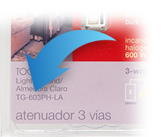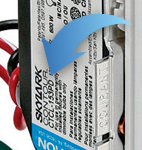
Explore Knowledge Articles
Back
Maestro Motion Sensor/0-10v Dimmer Installation
Maestro Motion Sensor & 0-10V Dimmer Installation
 Jump to a Section
Section (1): Product Installation
Jump to a Section
Section (1): Product Installation
INSTALLATION WIRE DIAGRAMS, WALK ME THROUGH GUIDES, AND INSTALLATION VIDEOS
MS-Z101 Maestro Companion Switch (MA-AS) for 3-Way or 4 Way applications sold separately. Note: The MS-Z101 will not work with MA-R companion dimmers.
Section (2): FAQs
INSTALLATION WIRE DIAGRAMS, WALK ME THROUGH GUIDES, AND INSTALLATION VIDEOS
MS-Z101 Maestro Companion Switch (MA-AS) for 3-Way or 4 Way applications sold separately. Note: The MS-Z101 will not work with MA-R companion dimmers.
Section (2): FAQs
- Do I have to use a companion switch in a 4-way (three locations) application?
Yes, a Maestro companion switch (model MA-AS) must be used with the MS-Z101 for a 4-Way application.
- How does a Maestro wire in a 4-way if there are only 3 terminals?
In a 4-way location, two wires will be connected to the blue screw terminal. These will be the wires that are tied to the blue screws on the other two dimmers.
- Can I use two Maestro sensors in a 3-way application?
No. You can use only one sensor in a 3-way. You'll need to use either a mechanical switch or a Maestro companion switch (model MA-AS) in the other location. For 4-way applications, you'll need to use two Maestro companion switches with the sensor; you won't be able to use mechanical switches.
- Can I run the low-voltage wire in the same conduit as the line voltage wire?
This answer depends on local codes and the capabilities of the ballast/driver. Local codes that allow Class 2 wiring to be run as Class 1 will call out what is required for reclassification, such as adding Class 1 labels over the Class 2 markings. However, running the 0-10 V signal as Class 1 wiring does introduce some concerns, including noise/interference caused by coupling between the line voltage and low voltage wires. This noise/interference can cause a voltage fluctuation on the 0-10 V wires which can create a difference between the light level requested by the control and the light level signal being received by the ballast/driver. For more information on 0-10V applications, check out our Application Note.
Was this article helpful?
Thank you! We appreciate your feedback!


